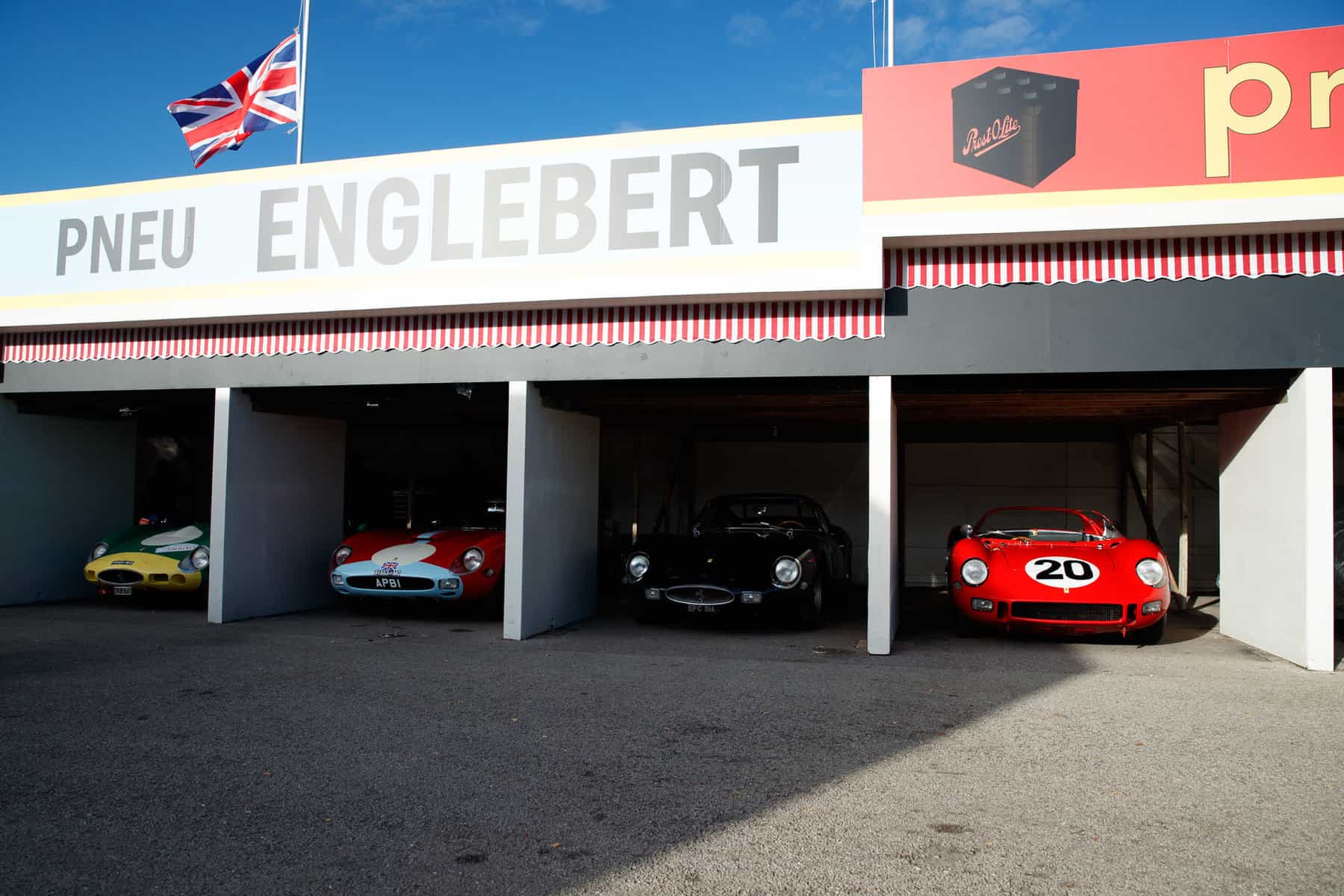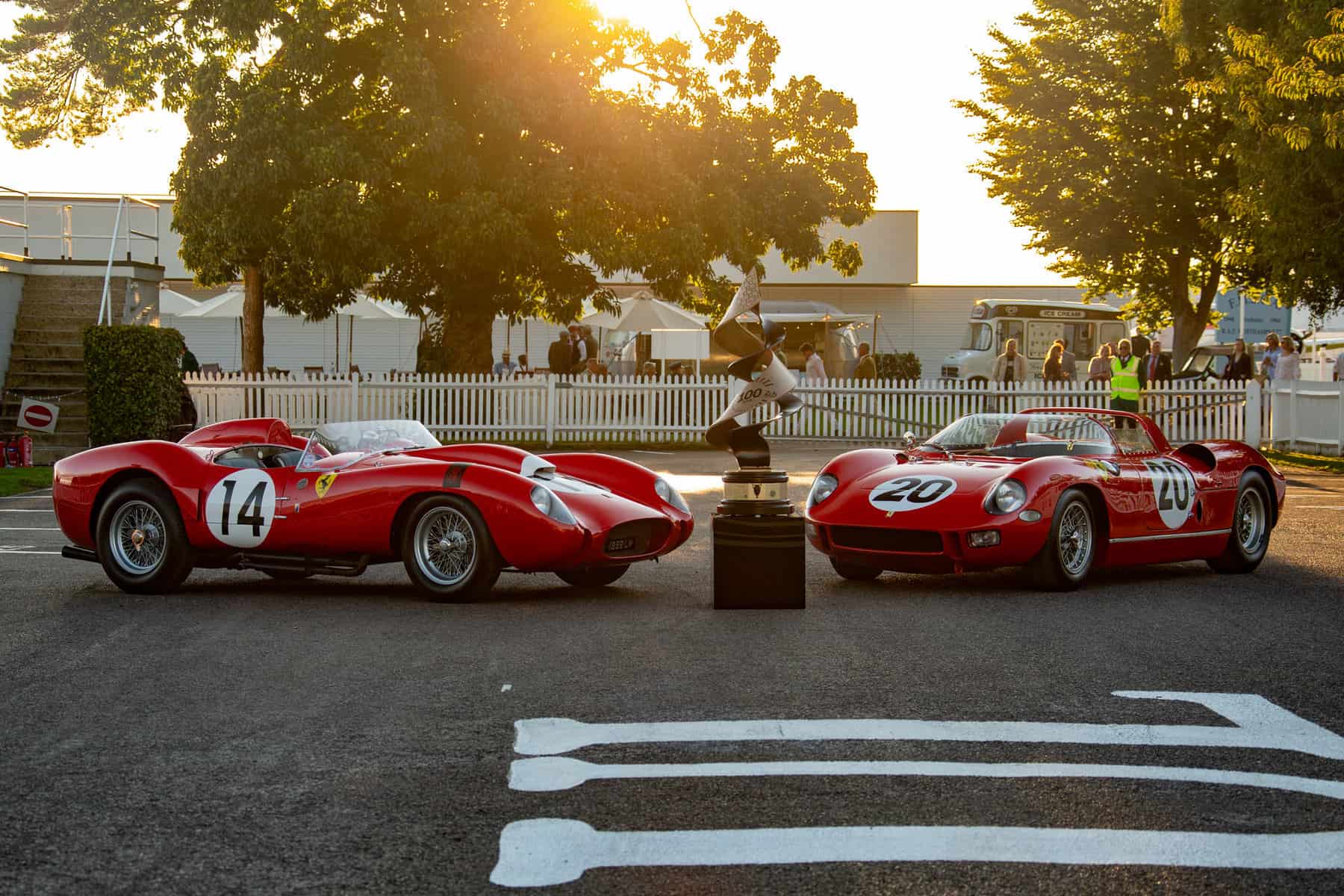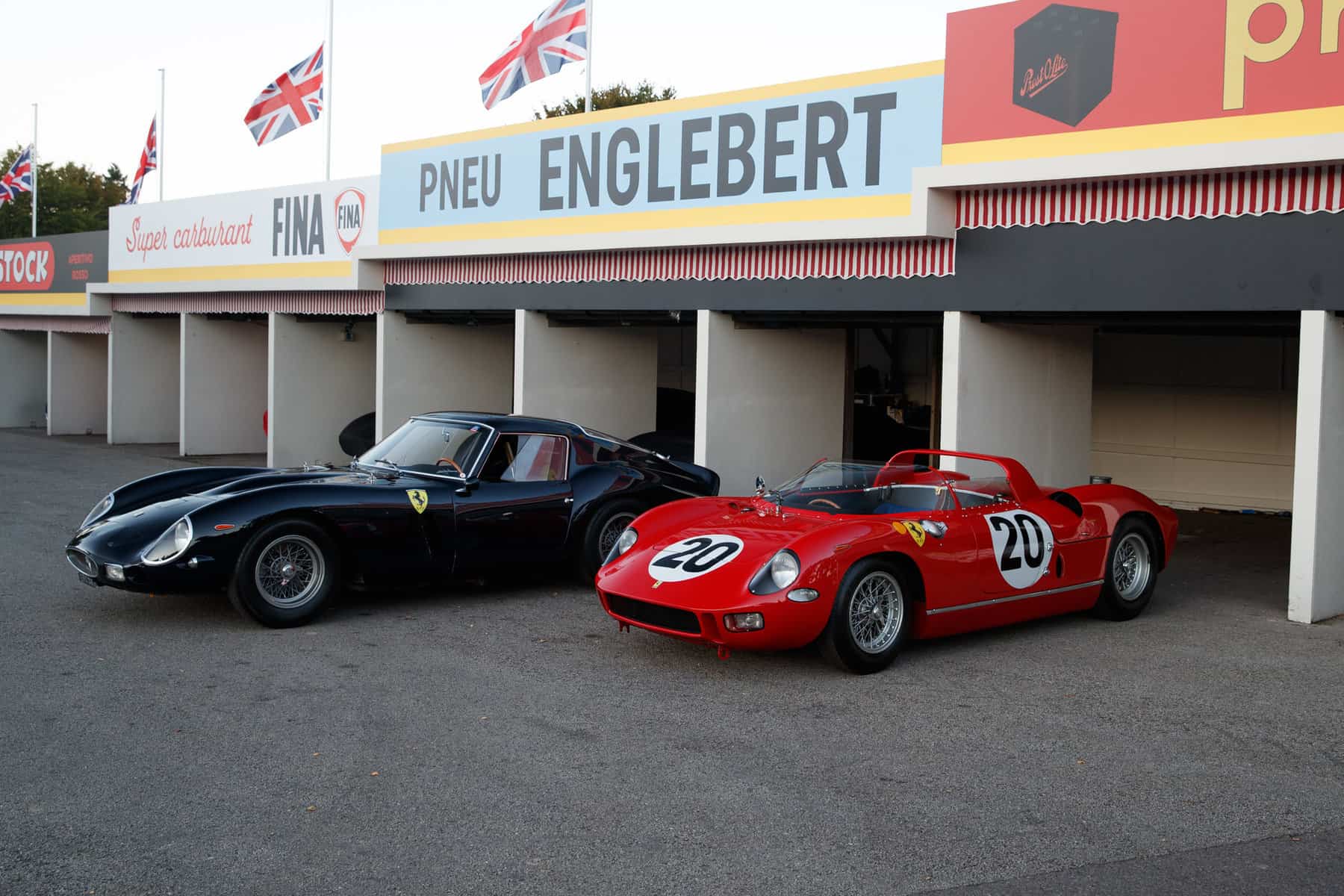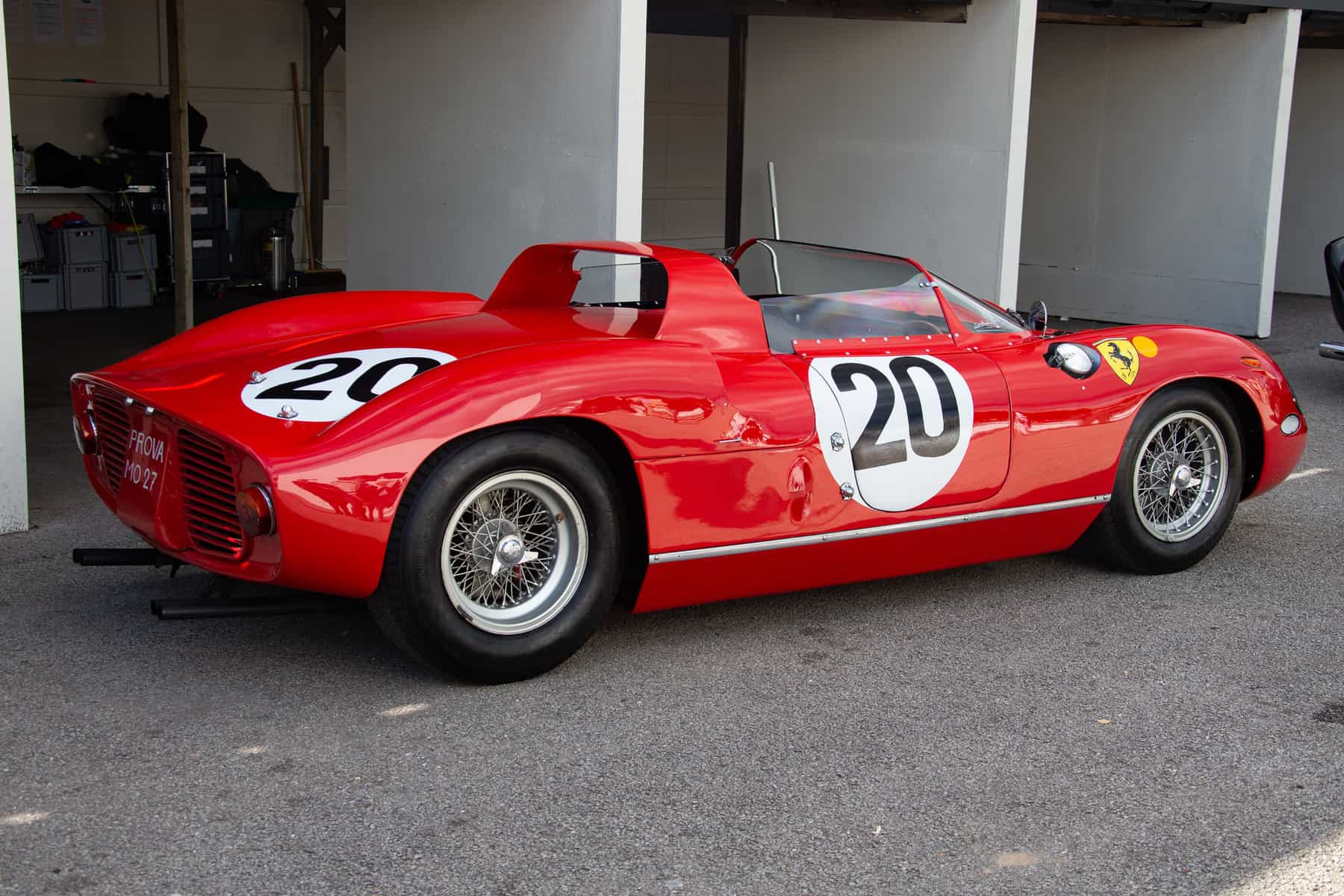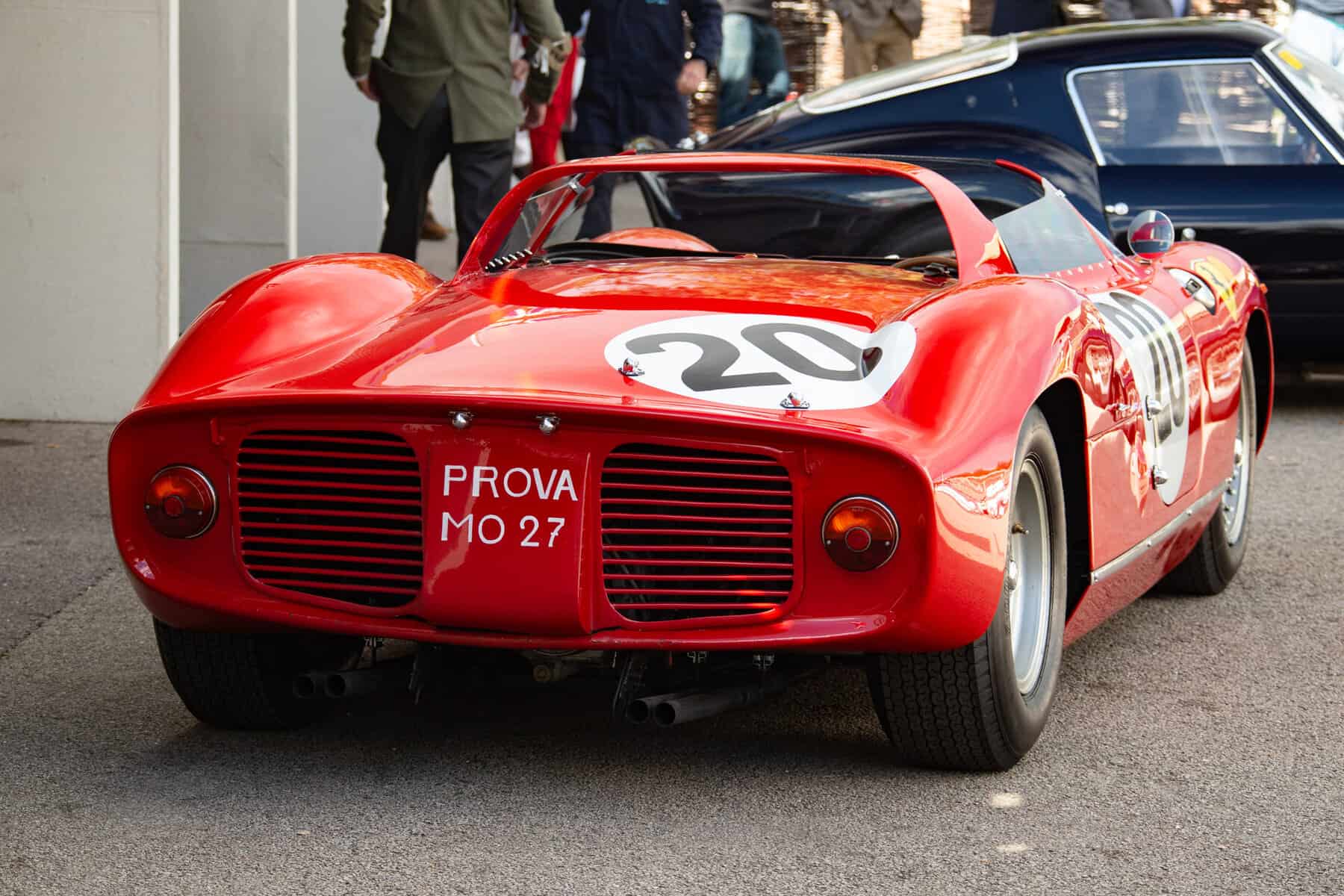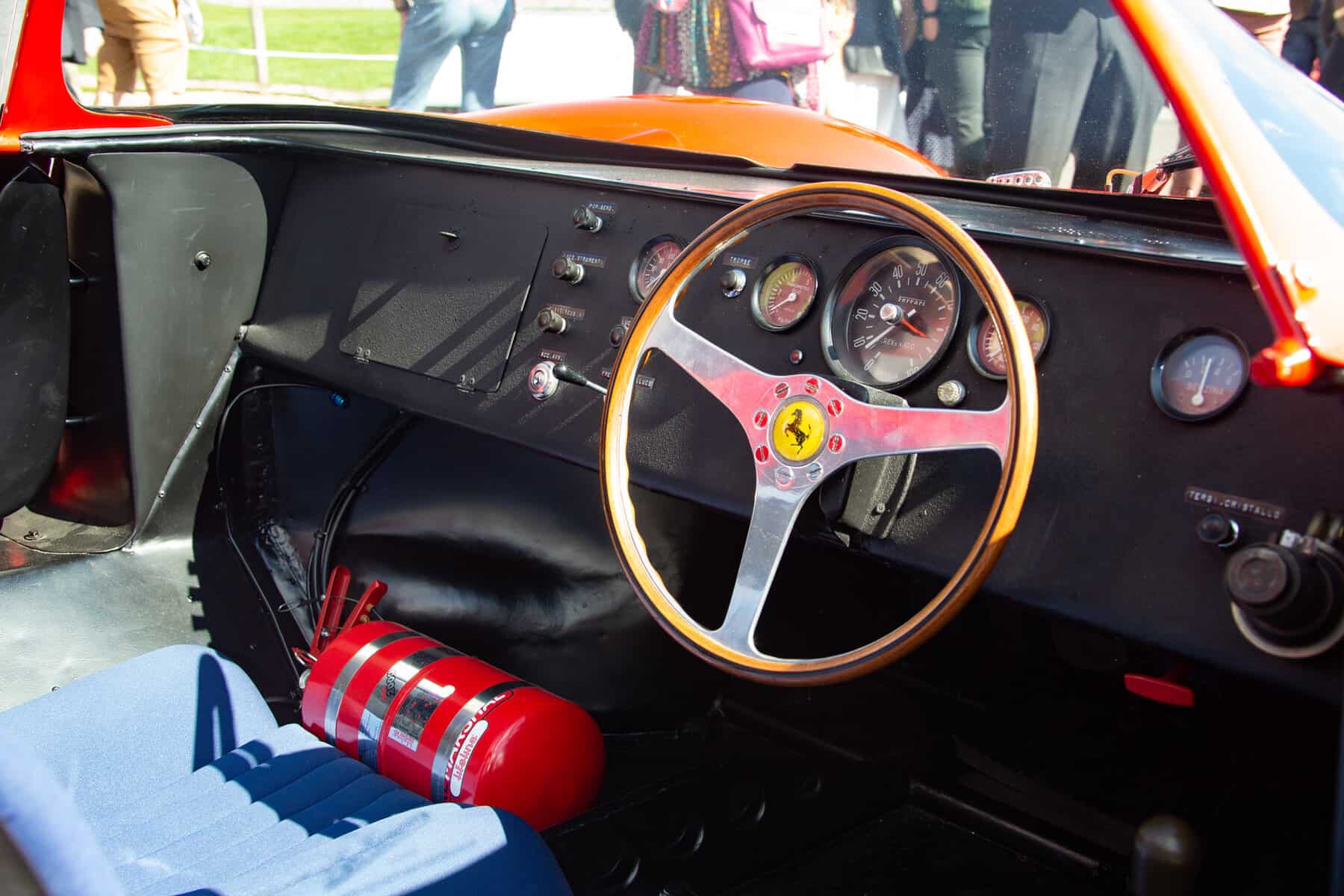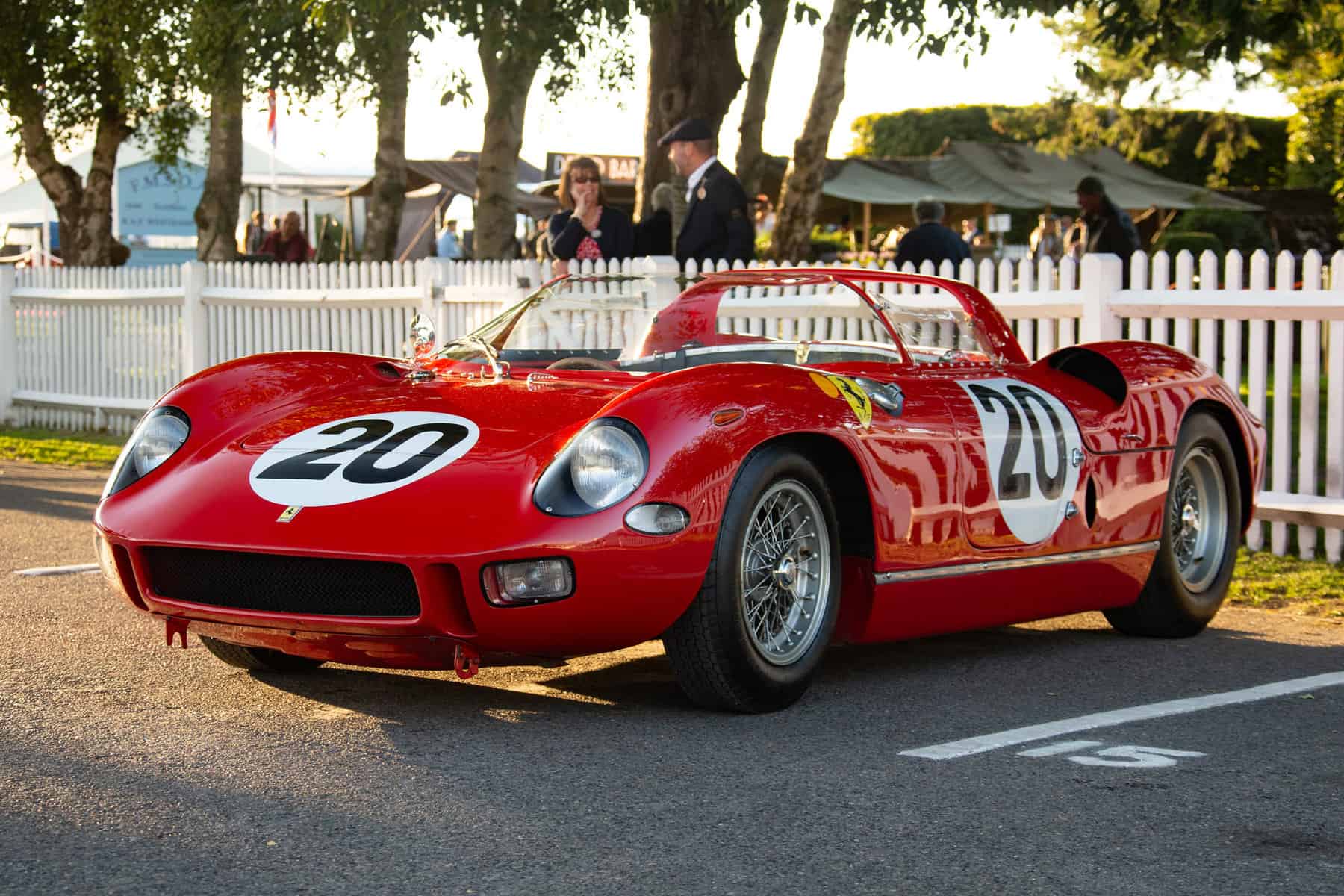
Ferrari 275P
The most significant Ferrari of them all?
WORDS & IMAGES BY: WOUTER MELISSEN
It is the centenary year for the 24 Hours of Le Mans, arguably the most prestigious of all long-distance races. Scoring a victory is already quite an achievement and during the hundred-year history only a handful of cars have managed to win the race twice.
Between 1949 and 1965, Ferraris won the race nine times, and it was long believed that no single Ferrari had done it twice. That was until 2018, when Ferrari Classiche discovered that the 275 P that had won Le Mans in 1964 had already done so in 1963 under a different chassis number. For good measure, that same dive into the Ferrari archives also revealed that chassis 0816 was also the winner of the 1964 Sebring 12 Hours.
For Ferrari, 1963 was a year of profound change. The previous year, the Italian manufacturer had won Le Mans with the unique 330 TRI LM with chassis number 0808. This represented the ultimate development of the front-engined “Testa Rossas” that had won the race four times in six attempts between 1958 and 1962. The reason that chassis 0808 was strictly a one-off was that it was built specifically for the 24 Hours of Le Mans. The other rounds of the World Sportscar Championship were run for homologated GT cars and dominated by the Ferrari 250 GTO. The very next works prototype off the line was chassis 0810 (Ferrari used even numbers only for sports prototypes), which represented a clean break. No longer was the V-12 mounted ahead of the driver, but instead was found amidships.
Ever the conservative, Enzo Ferrari long held the opinion that the horse should be mounted in front of the buggy and not behind it. It was the success of the mid-engined Coopers and Lotuses in single-seater racing and later sports cars that had made shuffling the driver and engine almost inevitable. Ferrari also followed suit and won the 1961 Formula 1 World Championship with the mid-engined 156 F1 “Sharknose.” That same year, the first mid-engined sports cars were also produced, but these were powered only by a variety of V-6 and V-8 engines. These nimble machines did very well at the Targa Florio and the Nürburgring 1000 km. For the high-speed events like Le Mans, the V12-engined Testa Rossas were still up to the task for another two seasons. With the sports car category returning to the 1963 World Championship, there was added incentive for Ferrari to create the first mid-engined sports car powered by a V-12 engine.
Introduced to the press at Monza on March 4, 1963, the new Ferrari was dubbed the 250 P. Following Ferrari’s often used naming policy, this meant that it was a prototype with an engine that had a unitary displacement of roughly 250 cc. As the new car was powered by a V-12, the swept volume accordingly was 2,953 cc. Known as the Tipo 128 LM63, it was a further development of the engines that had powered the 250 Testa Rossa and 250 GTO to great successes. Its origins can be traced back to the very first Ferrari V-12 engine, designed by Gioacchino Colombo during the second half of the 1940s. The short-block featured single overhead camshafts and, breathing through six twin-choke Weber carburetors, was rated at 310 hp. The cam-covers were finished in red wrinkle paint, which originally gave the Testa Rossa or Red Head its nickname.
Mated to a five-speed transaxle, the V-12 was mounted in a new tubular spaceframe chassis designed by Mauro Forghieri. Although very young and new at the job, Forghieri was a remarkable talent and more than suited to the job. Further torsional rigidity was added to the chassis by welding some of the aluminum body panels to the steel tub. The suspension was through double wishbones on all four corners. Dunlop-supplied disc brakes were also fitted. The 250 P was fitted with Spyder bodywork that was designed by Pininfarina. Its most striking feature was the roll-over hoop behind the cockpit that doubled as a rudimentary aerofoil. There also was a prominent bulge at the very back of the cut-off tail to clear the gearbox.
Ferrari showed two 250 Ps at the Monza launch: chassis 0810 and 0812. These were immediately thereafter flown to Florida to make their competition debut in the Sebring 12 Hours. At the factory, two further examples were built for use later in the season: 0814 and 0816. It was a spectacular debut as 0810 and 0812 finished first and second respectively at Sebring. There were reliability issues and an accident at the Targa Florio, but the new 250 P scored another win at the Nürburgring 1000 km. This time, it was chassis 0812 that proved victorious. The brand-new 0814 was crashed heavily and would require extensive repairs. With less than four weeks to go, its Le Mans start was in jeopardy.
Ferrari had submitted an entry request at Le Mans for the first three 250 Ps: 0810, 0812 and 0814. Due to the extent of the damage done to 0814 at the Nürburgring, Ferrari decided to send the all-new 0816 instead. The Italian team, however, failed to inform the organizers, which saved doing a lot of paperwork. This not only fooled the organizers but also many historians, who relied on the records kept by the Automobile Club de l’Ouest. As luck would have it, it was the 250 P entered as chassis 0814 that won the race in the hands of Lorenzo Bandini and Ludovico Scarfiotti. They finished a full sixteen laps ahead of the second placed Ferrari 250 GTO and a sister 250 P. History was made as 0816, masquerading as 0814, was also the first mid-engined car to win the 24 Hours of Le Mans.
During the remainder of the season, all four 250 Ps were raced on both sides of the Atlantic, but no further victories were scored. One example was then sold to American distributor Luigi Chinetti, while the other three received subtle modifications. Crucially, larger 3,285 cc and 3,967 cc engines were used to create the 275 P and 330 P respectively. There were subtle changes to the exterior and the 4.0-liter engined 330 P also received wider tires. In addition to the three updated 250 Ps, Ferrari built three new chassis. The 275 P engine was rated at 320 hp, while the larger Tipo 163C V12 of the 330 P was good for 370 hp. The additional horses did come at a 30 kg weight penalty.
There were no fewer than five V-12-engined Ferrari P cars at the Sebring 12 Hours. According to the period documents, these included three new cars and two of the updated 1963 examples. Ferrari Classiche, the company’s heritage department, discovered that the numbers attributed to the cars in period were again not correct. Mike Parkes and Umberto Maglioli won the race in what was long believed to be 275 P chassis 0812. The recent Ferrari research suggest that it was again 0816 that won the race with 0812 being used instead by Ludovico Scarfiotti and Nino Vaccarella to finish second, one lap down on the winners. John Surtees and Lorenzo Bandini were third in the brand-new 0822, which was raced in 330 P specifications.
Next up was the official test for the 24 Hours of Le Mans. It was a highly significant occasion, as it was the official debut of the Ford GT(40). While the all-new Fords had a tough time, the Ferraris were fastest of all. Ferrari decided to skip the Targa Florio but did field four prototypes in the Nürburgring 1000 km. Famously grueling, the long track took out three of them but Ludovico Scarfiotti and Nino Vaccarella stayed clear of any trouble and won with 0820 in 275 P specification. For Le Mans, there were four works Ferraris and two customer cars, going up against three Fords. Not raced since its Sebring win, 0816 was one of the four factory cars, driven by Jean Guichet and Nino Vaccarella. They led the way in a one-two-three victory, making 0816 the only Ferrari to win Le Mans twice.
For the 1965 season, Ferrari responded to the threat of the very well-funded Ford GT40 program with the new P2, again raced in 275 and 330 form. These featured revised bodywork and all-new four-cam engines. The surviving P cars were surplus to requirements and sold off to prominent customers. Following one final outing as a works car at Sebring early in 1965, chassis 0816 was sold to Major William Cooper. He raced the car with little success, predominantly at Elkhart Lake. It was then sold to Luigi Chinetti, whose North American Racing Team (NART) gave the car its final outing, at the 1969 Sebring 12 Hours. It failed to finish and was classified forty-seventh overall.
The following year, it joined the rapidly growing collection of Frenchman Pierre Bardinon. His stable of Ferraris was without equal and at one point included four outright Le Mans winners. During Bardinon’s ownership, chassis 0816 was understood to be a one-time Le Mans winner. As such, it was already very significant, as it was the last works Ferrari to have won at Le Mans. During the next forty years, the 275 P was beautifully preserved and only very rarely seen in public including at events at Bardinon’s own Mas du Clos circuit. In 2000, it was reunited with Guichet at the Goodwood Festival of Speed.
Pierre Bardinon sadly passed away in 2012, after which the collection was gradually dispersed by his children to pay the hefty French inheritance tax, which goes up to 45 percent. In 2016, a Ferrari 335 S from the collection was sold at the Artcurial Retromobile auction for nearly $36 million. Two years later, the 0816 was due to be entrusted to Artcurial for the same sale. There was talk of a potential new world record for what was then still understood to “only” be the 1964 Le Mans winner. A few weeks before the auction, the Ferrari 275 P was withdrawn from the sale due to “proceedings concerning the estate.” Reportedly, the Bardinon family and French authorities did not agree on the value of the collection and the amount of tax due.
Whether this resulted in additional research into the history of 0816 is not known, but some six months later rival auctioneer RM Sotheby’s announced that the car was back on the market as a private treaty sale. Poignantly, the Anglo-Canadian company also revealed that 0816 had not just won Le Mans once but twice, and scored a win at Sebring in 1964. This new information was discovered by Ferrari Classiche in documents that had apparently been stored for many years in boxes in a Maranello basement. This was rather convenient for most parties involved but considering the damage done to 0814 at the Nürburgring 1000 km, it is logical to conclude that 0816 did indeed win Le Mans twice.
What is a real shame is that Bardinon himself never knew that he owned what may very well be the most significant and valuable Ferrari sports racing car in existence. Although no sum was disclosed, RM Sotheby’s did find a new owner and today the car is again part of a very significant collection, which also includes a beautiful Ferrari 250 GTO. Today, the 275 P is in full running order and boasts a lovely cosmetic condition with just the right amount of patina. At a rare outing, it was shown at the 2022 Goodwood Revival to celebrate the upcoming Le Mans centenary and Ferrari’s seventy-fifth anniversary.
